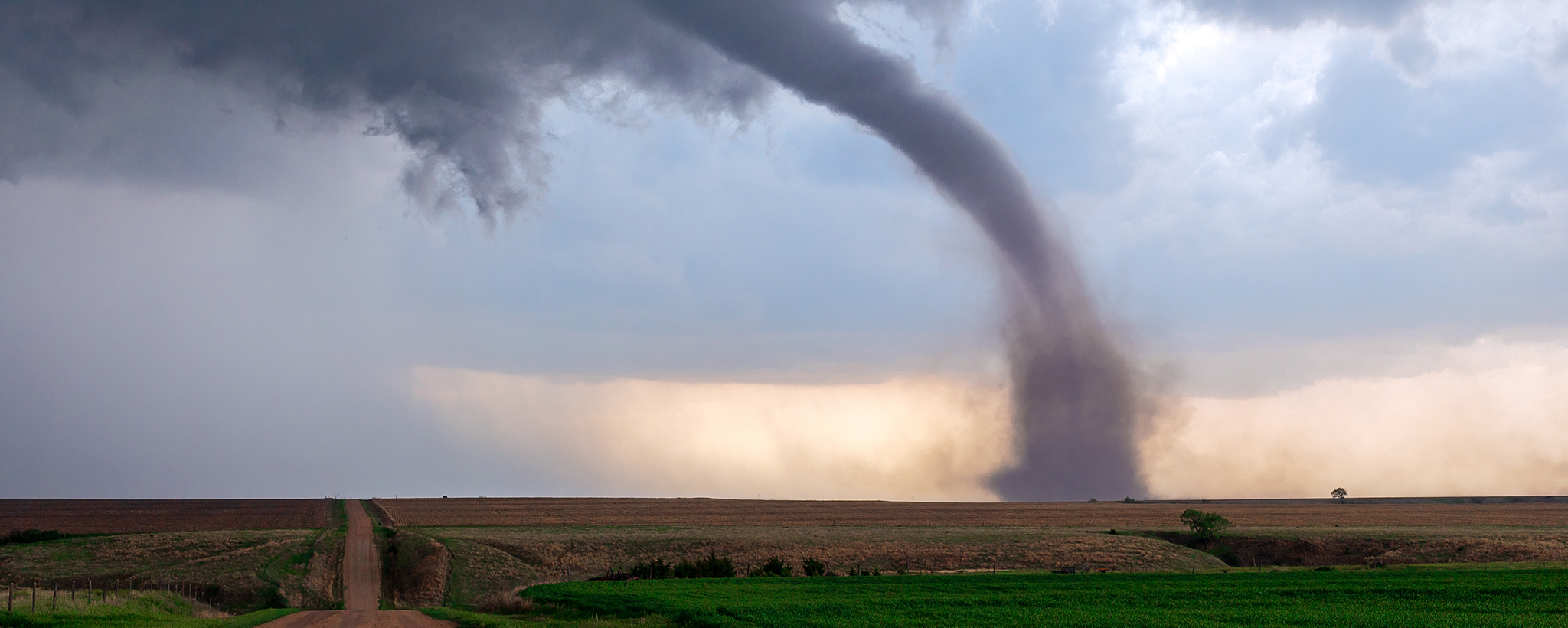Words to Know
Am I at Risk?
What Can I Do?
Learn More
Tornadoes are nature’s most violent storms. They appear as a funnel, or cone-shaped cloud, with wind speed that reach over 200 miles per hour.
Words to Know
Tornado watch: A warning issued when severe weather that may allow tornadoes to form is possible. It means you should pay attention to TV, radio, and make sure your weather radio is turned on. Make sure your phone can receive Wireless Emergency Alerts.
Tornado Warning: A tornado warning means that a tornado has been spotted, or that Doppler radar indicates a thunderstorm circulation which can spawn a tornado. When a tornado warning is issued for your town or county, you should find a safe place to shelter right away.
Funnel Cloud: A long cloud shape that is wider at the top and skinny on the bottom, like an ice cream cone.
Am I at Risk?

Tornadoes can happen anywhere and at any time if the weather conditions are right. Here in the United States, areas in the middle of the country east of the Rocky Mountains experience the most tornadoes on average. However, the risk shifts each season.
- In winter, the Gulf Coast state from Louisiana to Georgia tend to have the most tornadoes on average.
- In spring, this area shifts into North Central Texas and Oklahoma. By summer, the risk area moves north to the Central and North Plains.
- In autumn, the risk shifts back south, extending from East Texas into Mississippi. Finally, the risk area returns to the Gulf Coast states in winter.
What can I do?
Before
- Help your family build an emergency kit. If you have pets, make sure to include things they will need.
- Make a family communications plan. Plan how to communicate with family members if you lose power or aren’t together when there’s a tornado.
- Know the signs of a tornado, including a rotating, funnel-shaped cloud, an approaching cloud of debris, or a loud roar like a freight train.
- Practice going to a safe space with your parents and pets. This could be a basement, cellar, or the lowest flood in a building. If you don’t have a basement, go to an inside room like a closet or hallway.
- If you live in a mobile home, it’s important to pick somewhere safe, like a sturdy building or storm shelter, to go if your area is under a tornado warning. If you cannot get to a safer place line in a ditch and cover your heads with your hands.
- Put on sturdy shoes. If you have a bicycle helmet, put it on to help protect your head.
During

- Immediately go to the safe location that your family picked and take your pets if there’s time.
- Follow the instructions of your parents, caregivers, or teachers.
- Protect yourself by covering your head or neck with your arms and putting things like blankets around or on top of you.
- Stay away from windows.
- If you are in a car, get out and into a sturdy building. If you can see the tornado and it’s far away and the traffic is light, you may be able to drive out of its path by moving at right angles to the tornado.
- If you are caught in the car during a tornado and cannot get to safety, stay in it with your seat belt on. Put your head down below the windows, cover your head with your hands and a blanket, coat, or other cushion if possible.
- Avoid seeking shelter under bridges, which can create traffic hazards and does not provide enough protection.
After
- If there’s damage, stay away and follow the instructions of an adult.
- Don’t touch and exposed wires like power lines.
- Tell your parents if you smell gas.
- You can help your parents or caregivers contact your loved ones to let them know you’re okay.
- Know that it’s normal to feel anxious or stressed out. Everyone reacts differently to stressful situations. Take care of your body and talk with your parents or other trusted adults if you are feeling upset.
Learn More
- Ready Kids
- Prepare with Pedro activities, games and hazard storybooks
- Owlie Skywarn for Kids: owlie-tornado.pdf (weather.gov)
- Centers for Disease Control and Prevention: Ready Wrigley Prepares for Tornadoes Activity Book


